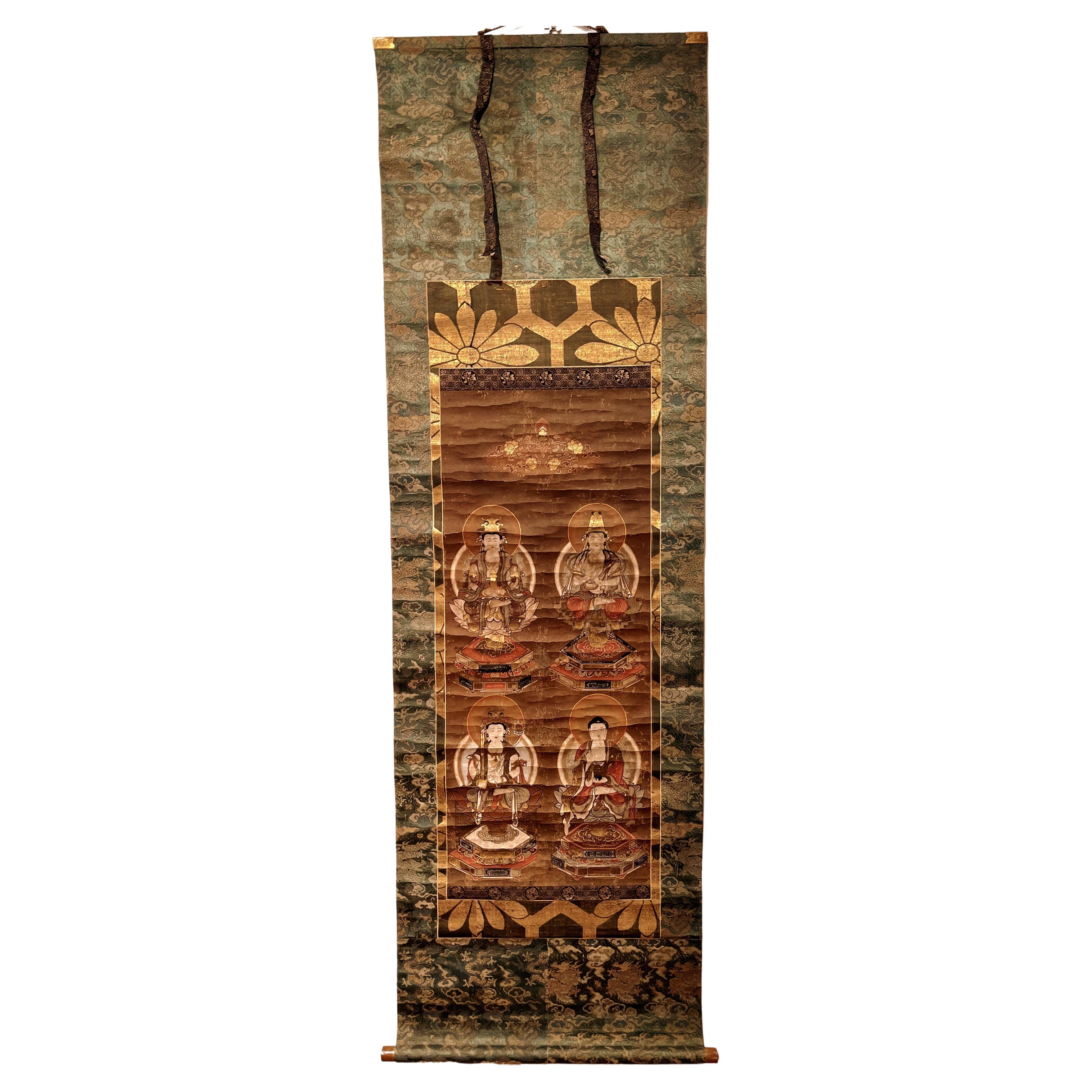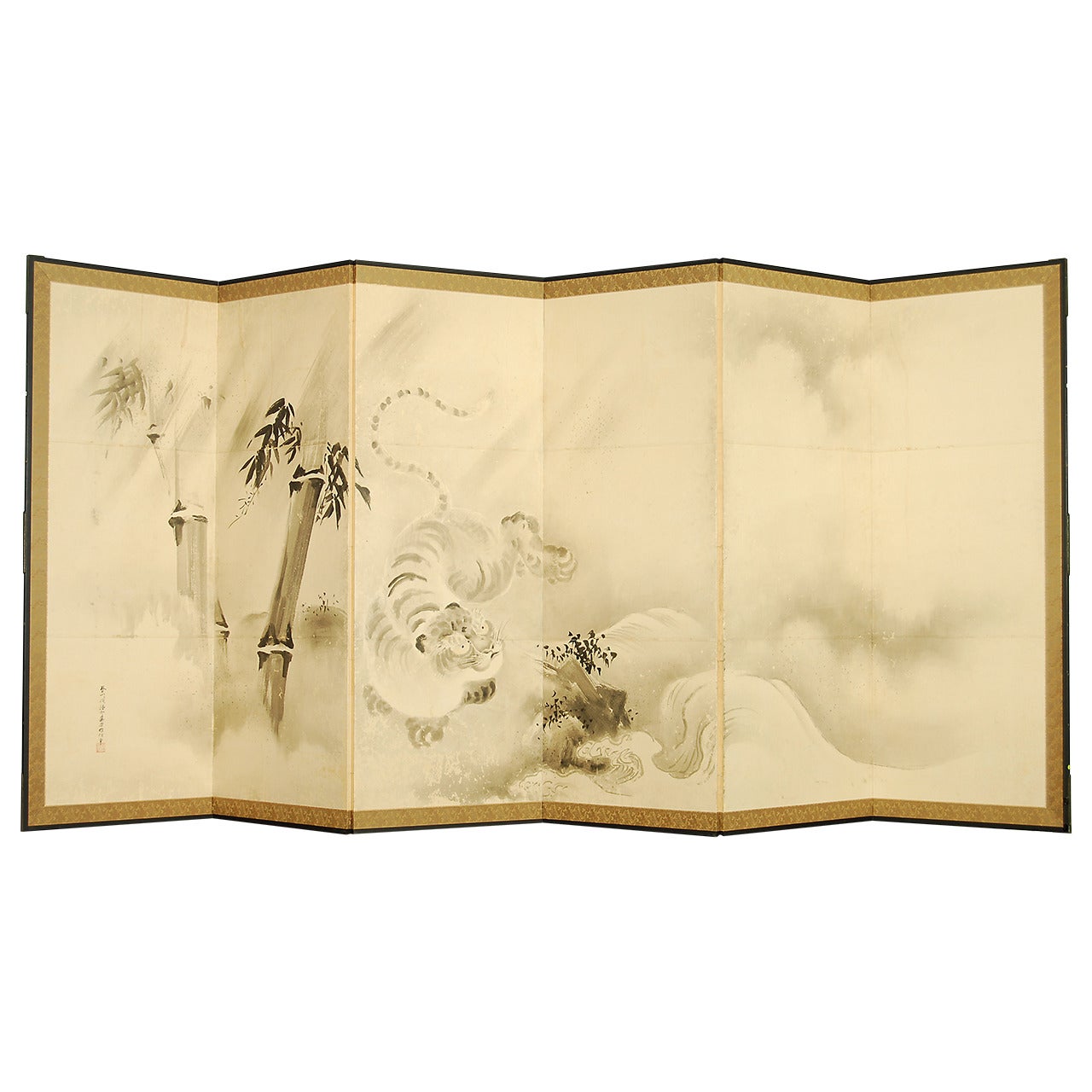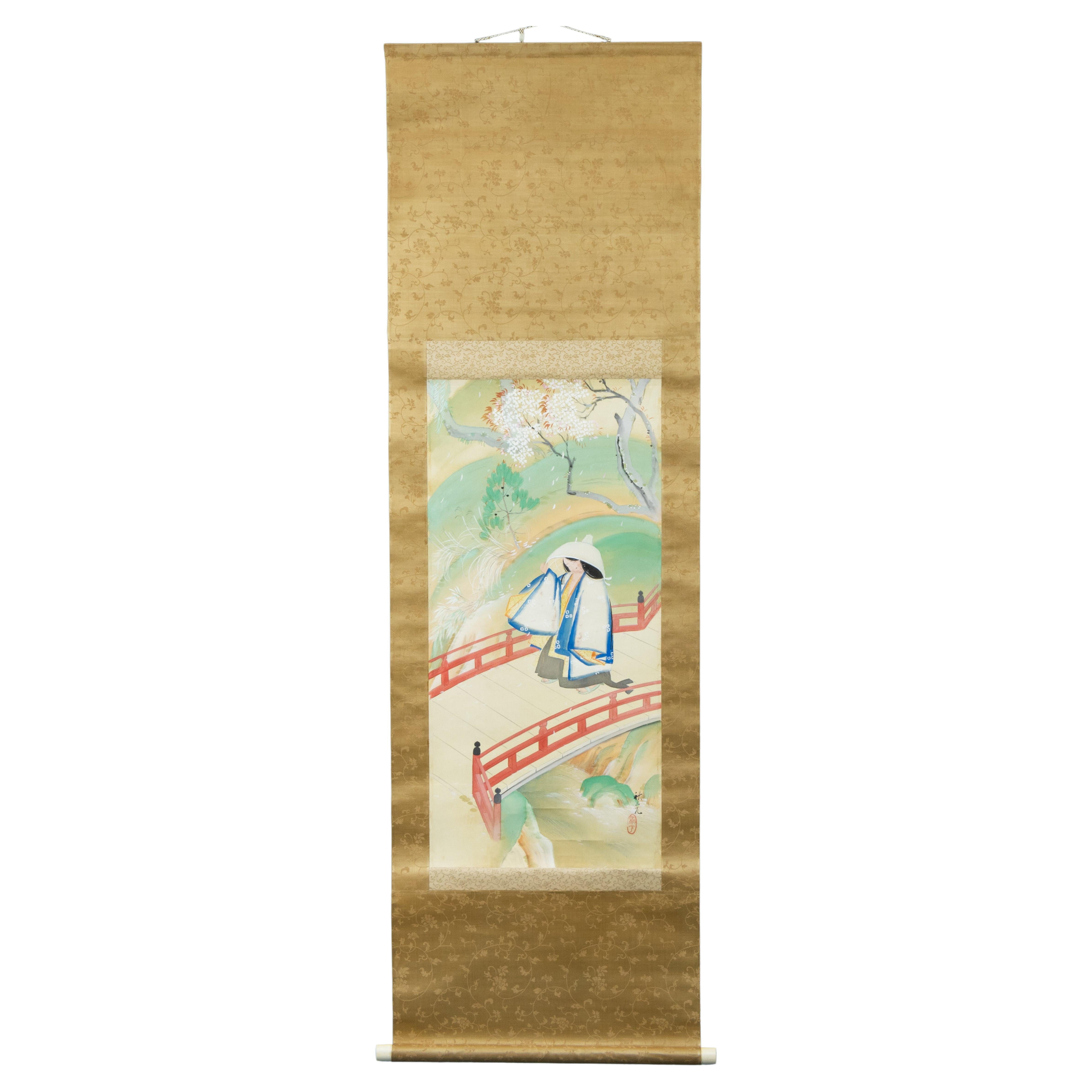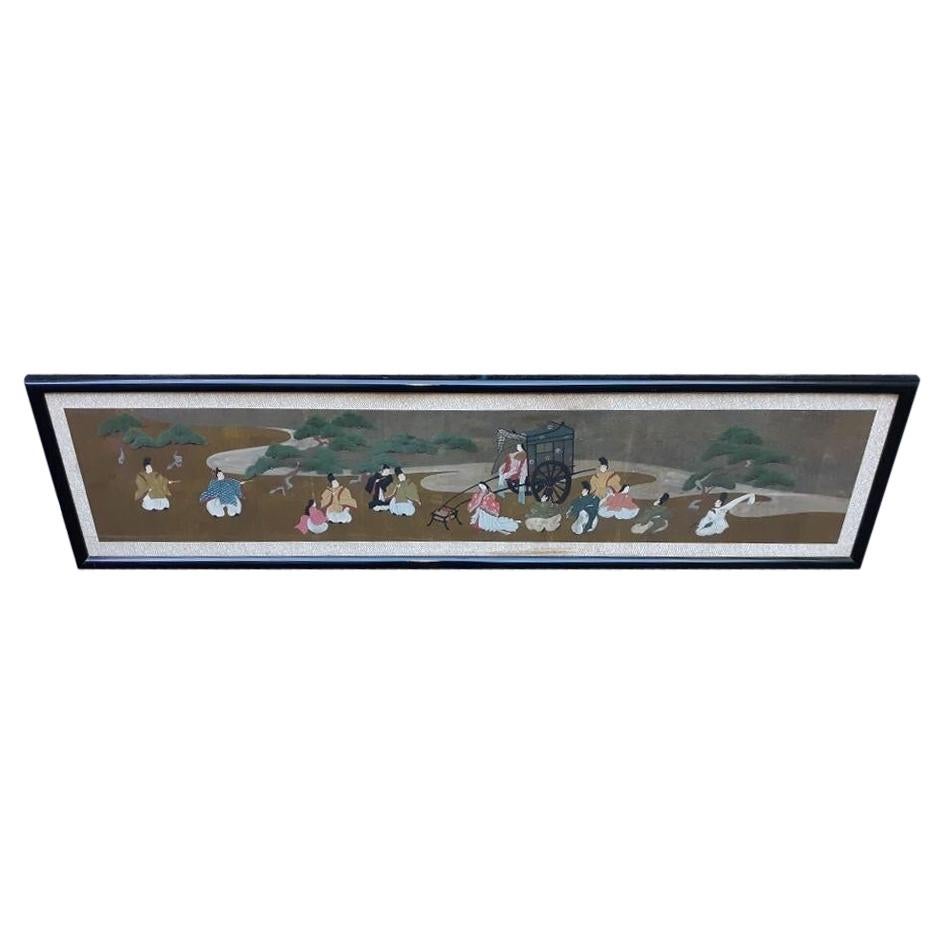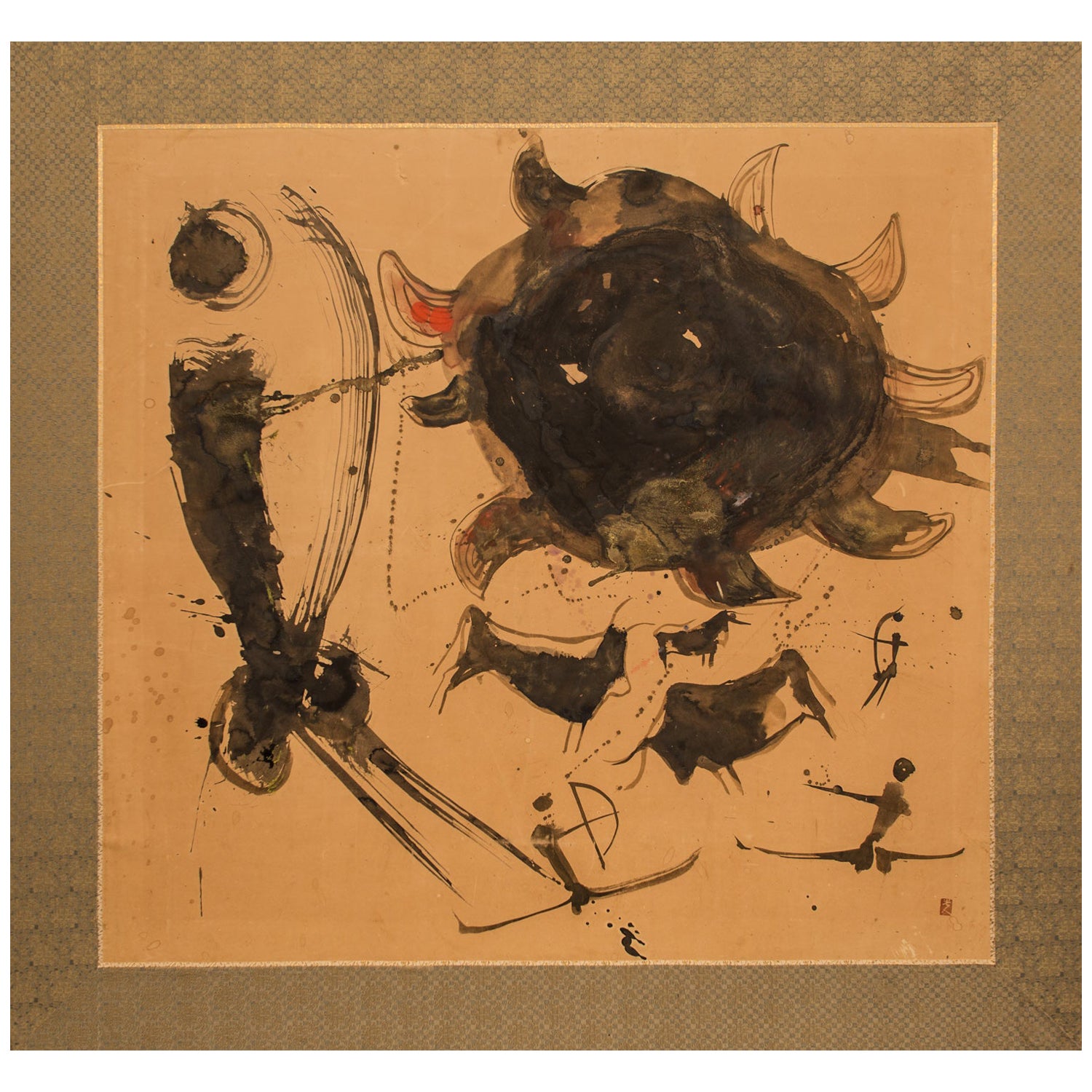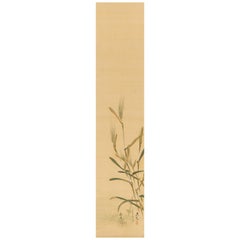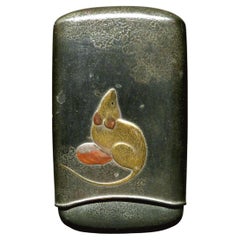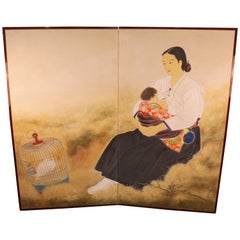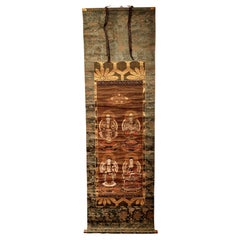
Japanese Painting by Shibata Zeshin
View Similar Items
Want more images or videos?
Request additional images or videos from the seller
1 of 5
Japanese Painting by Shibata Zeshin
About the Item
- Creator:Shibata Zeshin (Artist)
- Dimensions:Height: 13 in (33 cm)Width: 5.52 in (14 cm)Depth: 0.04 in (1 mm)
- Materials and Techniques:
- Place of Origin:
- Period:
- Date of Manufacture:circa 1860
- Condition:
- Seller Location:Milano, IT
- Reference Number:Seller: 5171stDibs: LU4250213651972
About the Seller
5.0
Recognized Seller
These prestigious sellers are industry leaders and represent the highest echelon for item quality and design.
Established in 2005
1stDibs seller since 2018
10 sales on 1stDibs
Typical response time: 2 hours
More From This SellerView All
- Shibata Zeshin ‘1807-1891’, BarleyLocated in Milano, ITMedium: Hanging scroll; ink and pigments on silk Signature: Zeshin Seal: Tairyukyo Date: circa 1880 Painting size: 98 x 20 cm Mounts size: 182 x 32 cm Shibata Zeshin...Category
Antique Mid-19th Century Japanese Paintings and Screens
MaterialsPaper
- Painting by Maeda Josaku (Japan, 1926 – 2007), Paysage Humain N° 14, 1960Located in Milano, ITSigned: Josaku Meda. 60. Singed on the back: "Paysage humain" N°14 / 7.1960 / Josaku MAEDA / à Paris Exhibitions: Turin (Italy), Gissi Gallery, Collettiv...Category
20th Century Japanese Paintings and Screens
MaterialsCanvas
- Hanging Scroll by Kamisaka Sekka, JapanLocated in Milano, ITThis painting represents a man waiting under a dark tree. The composition is extremely simple but suggestive. The artist, with few elements, can, in fact, create a vivid and dynamic scene, based on the tension between the strong ink stain that renders the tree and the elegant figure of the man, dressed in an aristocratic robe. Painter and designer, Kamisaka Sekka...Category
Early 20th Century Japanese Paintings and Screens
MaterialsPaper
- Japanese Folding Screen with a Spring Landscape, Kano School, 19th CenturyLocated in Milano, ITThe scene is dominated by a plum tree in bloom under which a couple of paradise birds is courting. The screen is crossed by a luxuriant creek, a typical feature of the springtime.Category
Antique 19th Century Japanese Paintings and Screens
MaterialsPaper
- Pair of Japanese Two-Fold Screens with Flower Arrangements and Rare BirdsLocated in Milano, ITKaramono with flower arrangements and rare birds Edo period, 18th century Pair of two-panel folding screens Ink, colors, gofun and gold leaf on paper Each 170 by 165 cm ...Category
Antique 18th Century Japanese Paintings and Screens
MaterialsPaper
- Pair of Japanese Screens with Flowers of the Four Seasons, 19th CenturyLocated in Milano, ITThis pair of screens belongs to a genre of lyrical paintings of flowers, grasses, and other plants that flourished around the middle of the 17th century and became a specialty of the Sôtatsu studio. The use of a rather complex composition of clusters of flowers and the puddling of ink was initiated by Tawaraya Sôtatsu, the founder of the Rimpa School, who was active from 1600 until 1642. The screens are abstract and decorative but there is, at the same time, a keen sense of naturalism not only in the attention to accurate detail but in the profusion of vegetation. The passage of the year is symbolized by the variety of plants that bloom in different seasons. The tarashikomi - here used on leaves, petals and trunks - is a Classic Rinpa technique in which pale black ink or a color is brushed onto an area of a painting and then either darker ink, or the same or a contrasting color, is dropped into the first before it has completely dried, creating an effect of pooled colors with softly blurred edges. Its delicacy, preciousness, and effeminacy are identified with the over-refinement of its patrons, while the vigor, monochromatic discipline, sharp observation, and virile forms of the Kano school are a testament to the vitality of the rising warrior class. The plants are almost all identifiable: in the summer-spring part, you can find wheat, buttercups, irises, begonias, hydrangeas, coral bells...Category
Antique 19th Century Japanese Paintings and Screens
MaterialsPaper
You May Also Like
- A Very Fine Takamaki-e Lacquer Cheroot Case in the Manner of Shibata ZeshinBy Shibata ZeshinLocated in Ottawa, OntarioThe 'ishime' lacquered case consisting of two conforming molded sections with one sliding overtop the other, both sides decorated with hand painted gilt, silver & burnt dark russet (kasshoku) lacquers, depicting motifs in low relief of a rat with an acorn on one side and two acorns on the opposing. In Japanese culture rats are considered auspicious symbols of fertility & wealth, acorns symbolize prosperity & growth. Signed with characters and a mon on one edge. Takamaki-e is a lacquer technique in which metallic powders such as silver, gold, copper, pewter etc., are used in combination with lacquer & clay-dust to build up motifs in low relief. Please note that the color tones & hues of the lacquered motifs appear somewhat more vibrant in the images due to ambient lighting conditions. Regarding the opinion stating the superior quality of this fine example being likened to works associated with those by Shibata...Category
Antique 1870s Japanese Meiji Lacquer
MaterialsLacquer
- Shibata Suika Japanese Painted Paper Screen with Okinawan Mother and ChildBy Shibata SuikaLocated in New York, NYA Japanese two-panelled paper screen painted with an Okinawan mother and child scene and a caged dove in natural setting. The piece was executed by Shibata Suika in 1930 during the S...Category
Vintage 1930s Japanese Showa Paintings and Screens
MaterialsPaper
- Japanese Buddhist Painting, Hanging Scroll PaintingLocated in Greenwich, CTJapanese Buddhist Painting , Hanging Scroll Painting Depicted Amituofo and Budhisattva in the painting sitting on the lotus crown seats. Bea...Category
Antique 19th Century Japanese Paintings and Screens
MaterialsPaper
- Japanese Buddhist Teaching PaintingLocated in Greenwich, CTJapanese Buddhist teaching painting, set of four paintings with 24 Buddhist stories with Japanese written characters in each story on one screen. Provenance: Purchased from Christie's South Kensington...Category
Antique 1820s Japanese Edo Paintings and Screens
MaterialsPaper
- Antique Japanese Kano School Painting by Yosenin KorenobuLocated in Prahran, VictoriaSix-panel Kano School tiger screen by Yosenin Korenobu (1753-1808). Sumi-e ink on paper, late 18th century. Dimensions: H 169cm x W 382cm.Category
Antique Late 18th Century Japanese Edo Paintings and Screens
MaterialsWood, Paper
- Japanese Landscape Painting, Hanging Scroll PaintingLocated in Greenwich, CTJapanese scroll painting of landscape painting depicted village along the riverside in the mountains with fisherman Ink and color on silk Overall size...Category
Antique 19th Century Japanese Paintings and Screens
MaterialsSilk
Recently Viewed
View AllMore Ways To Browse
Hand Painted Screen
Vintage Asian Paintings
Antique Asian Screen
Antique Asian Screens
Asian Antique Screen
Asian Scrolls
Antique Japanese Painting
Antique Japanese Paintings
Screen China
Chinese Screen
Chineses Screen
China Screens
Japanese Screen Art
Chinese On Silk
Chinese Painting 19th
Painted Panels Asia
Painted Asian Panels
19th Century Chinese Painting



